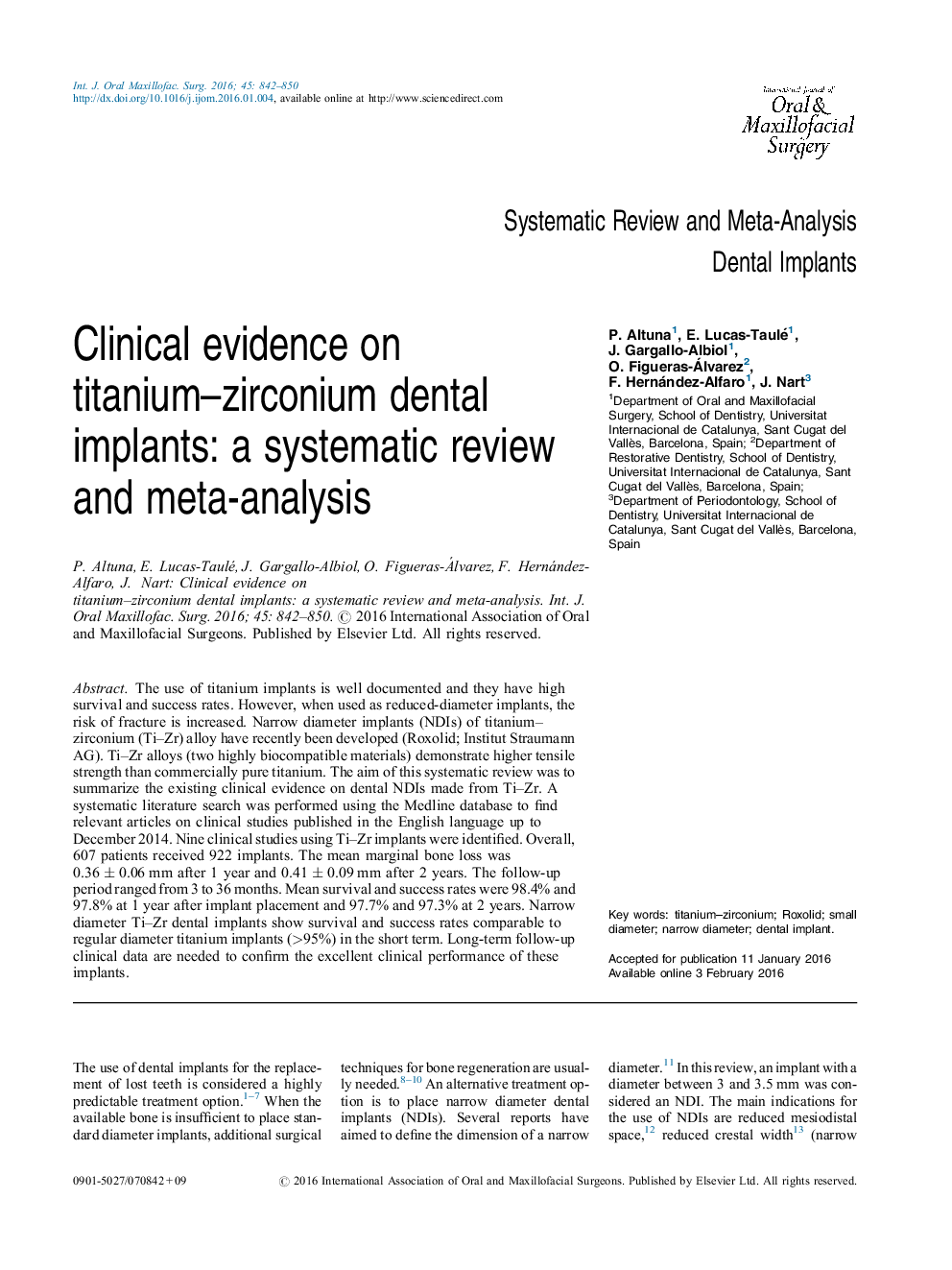| Article ID | Journal | Published Year | Pages | File Type |
|---|---|---|---|---|
| 3131838 | International Journal of Oral and Maxillofacial Surgery | 2016 | 9 Pages |
The use of titanium implants is well documented and they have high survival and success rates. However, when used as reduced-diameter implants, the risk of fracture is increased. Narrow diameter implants (NDIs) of titanium–zirconium (Ti–Zr) alloy have recently been developed (Roxolid; Institut Straumann AG). Ti–Zr alloys (two highly biocompatible materials) demonstrate higher tensile strength than commercially pure titanium. The aim of this systematic review was to summarize the existing clinical evidence on dental NDIs made from Ti–Zr. A systematic literature search was performed using the Medline database to find relevant articles on clinical studies published in the English language up to December 2014. Nine clinical studies using Ti–Zr implants were identified. Overall, 607 patients received 922 implants. The mean marginal bone loss was 0.36 ± 0.06 mm after 1 year and 0.41 ± 0.09 mm after 2 years. The follow-up period ranged from 3 to 36 months. Mean survival and success rates were 98.4% and 97.8% at 1 year after implant placement and 97.7% and 97.3% at 2 years. Narrow diameter Ti–Zr dental implants show survival and success rates comparable to regular diameter titanium implants (>95%) in the short term. Long-term follow-up clinical data are needed to confirm the excellent clinical performance of these implants.
